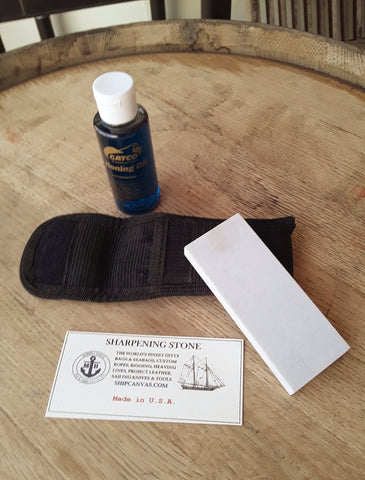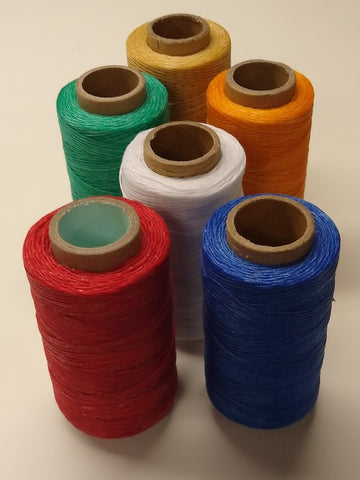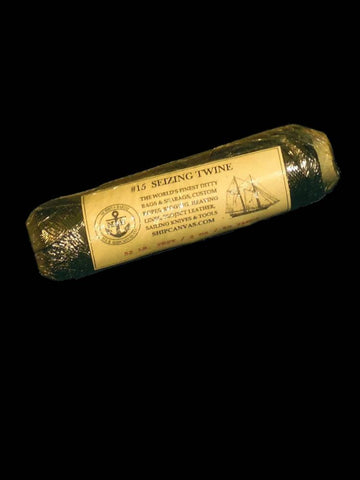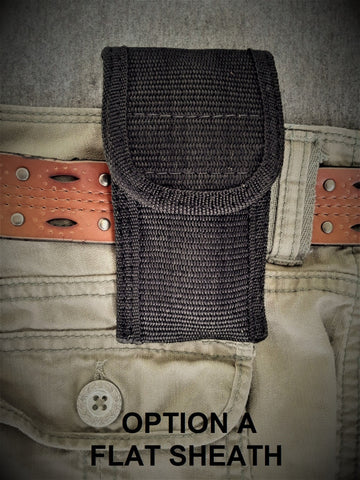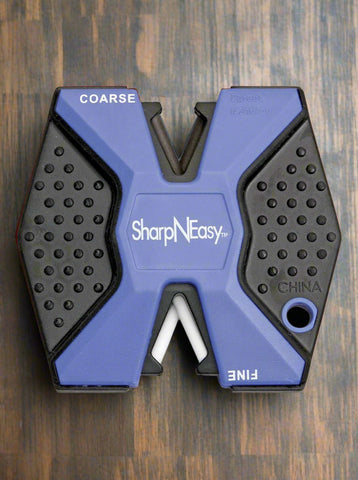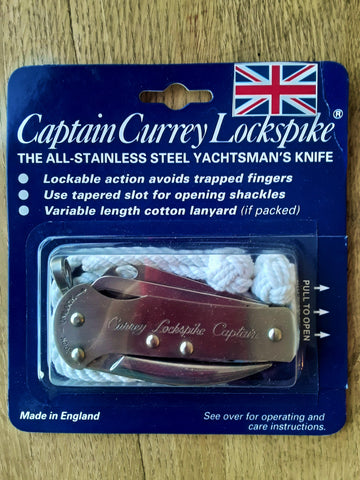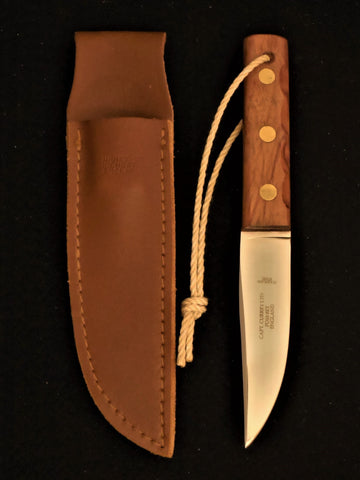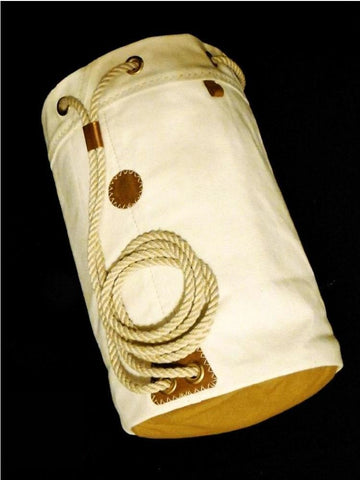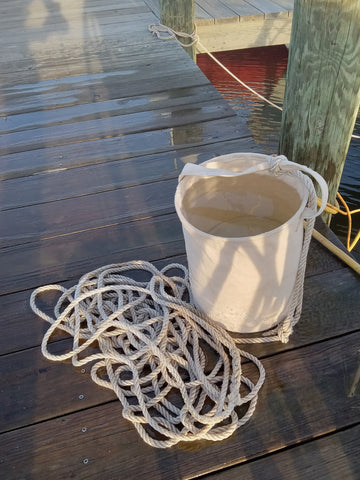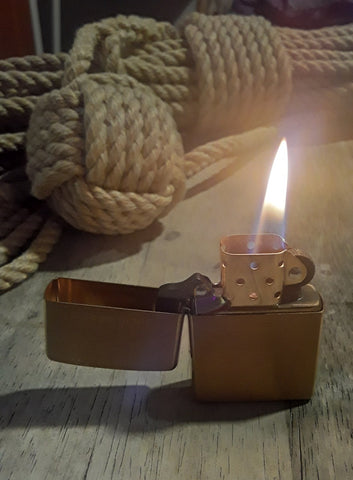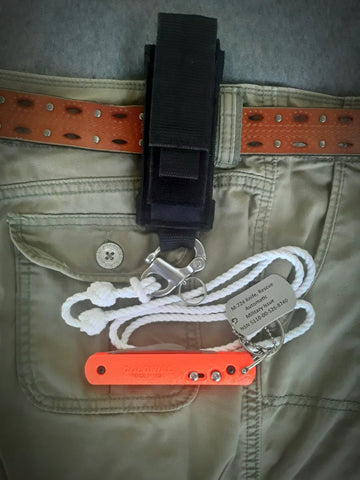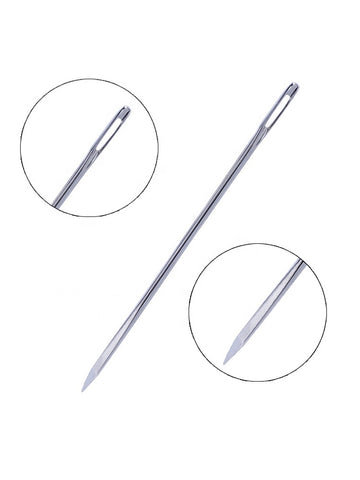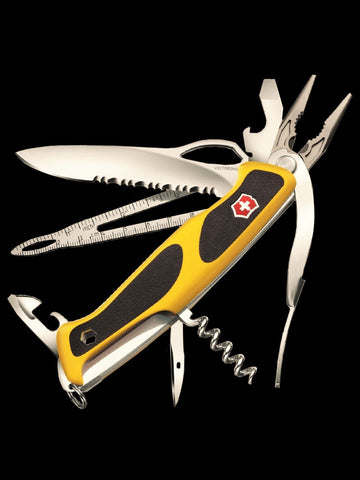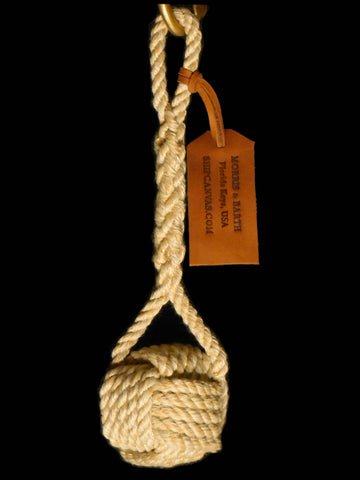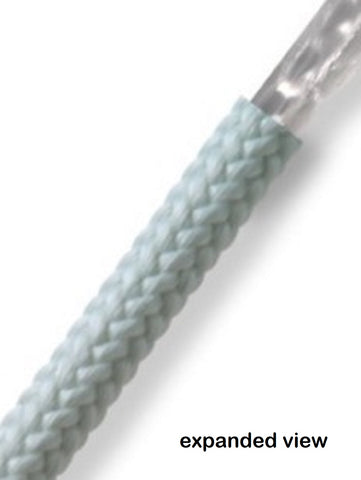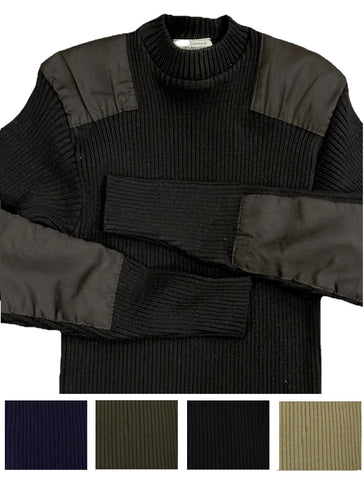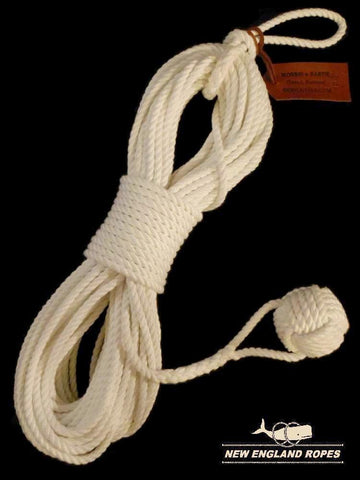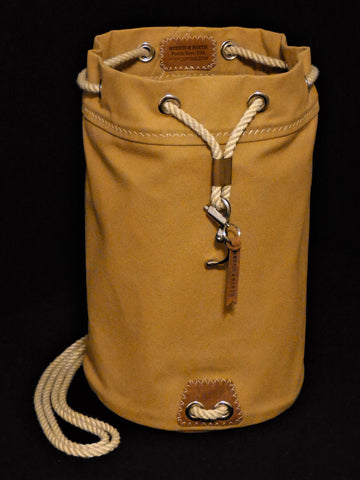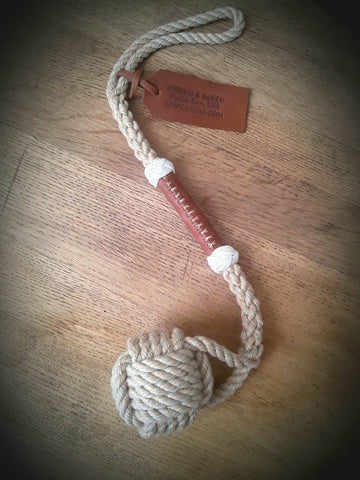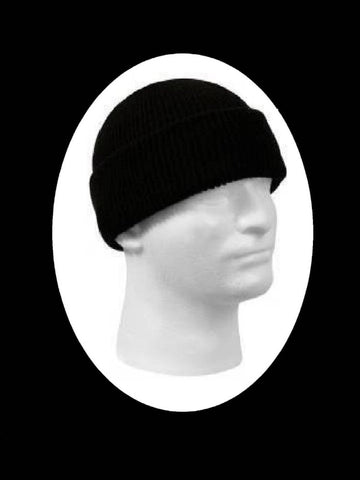Sailing & Rigging Knife Collection

Photo by Ed Morris / M&B SHIPCANVAS
Rigging Knife F.A.Q.'s
What is a "sheepsfoot" blade?
Throughout history, sailors, riggers and shipwrights have relied upon the traditional "sheepsfoot blade" for everyday use aboard the ship. It is named after its blunt, rounded tip and flat bottom edge which closely resemble the profile of a sheep's foot. It is not a fighting blade or weapon, but in the application of a rigging knife, it is understood to be one of the best blade designs for cutting rope.
Unlike a sharp-tipped hunting blade (drop point; clip, Bowie, etc.), the idea is to reduce the possibility of getting accidentally jabbed while working and moving around aboard the ship. The other advantage is that a true sheepsfoot blade carries a perfectly straight cutting edge. This enables the rigger to place a line on a cutting block or flat surface... then set the blade on the line exactly where he wants it... and then strike the top of the blade with a mallet. With a little bit of practice, this produces an extra-clean cut without sawing and damaging the line.

Centuries later, the "Sheepsfoot Blade" is probably still one of the best for cutting rope & lines.
Notice how the handle has been drilled to attach a lanyard. Perfect!
What is the marlinspike used for?
The marlinspike is the primary tool for everything rope-related. It should be tapered to a fine point, but not quite so sharp as to damage or cut the individual fibers of the line or rope. It is often used to help free up jammed knots in a hurry, particularly if the knot has been repeatedly soaked and strained over the course of time. The other use is for rope-splicing, where the spike will be inserted between strands to loosen things up and create working room for the tucks while completing the splice.
A proper rigging knife will also have a "lanyard bail" (or a ring, or sometimes a drilled hole) for attaching a light line or pull loop. With a lanyard, the knife can be tied to its owner and is always ready for action without risk of getting dropped overboard.
What about serrated blades, or combination straight/serrated blades?
Serrated blades have a very specific range of cutting applications in which they excel. The serrated blade cuts quickly and is ideal for high-tech rope materials such as Dyneema, Kevlar, and Spectra. It also does well as a safety knife for fast cutting in emergencies. However serrations work by "sawing rather than slicing," and so the fibers of the rope react differently, especially with smaller diameters, or when rigging and splicing.
So depending on how the knife will be used, there is a case to be made for both straight-edge and serrated type blades. The combination of both is also a possibility.
What is your advice on getting a folding knife vs. a sheath knife?
It really depends on the application because they both have their place. Personal preference is also a major factor here, as well as the size (diameter) of line that you might be expecting to cut. Of course a folding knife offers superior portability and convenience because it can be easily slipped into a pocket or pouch. And as long as its kept sharp, a good folding knife can do just about anything that a sheath knife can do.
However a sheath knife offers the quickest, one-handed operation, which can be an important safety consideration. Also the sheath knife, due to its usually greater length and mass, is able to cut larger diameters of line faster, and with fewer strokes. I also like the fact that a sheath knife can be combined into a tool kit... holding real and proper full-size tools that are durable enough for everyday use aboard the ship.
Ed's favorite! Can you ever have too many knives?
This 5-Piece Rigger's Kit has all the bells and whistles.
In nautical terms, what is the difference between a rope and a line?
Technically speaking, "rope" is synonymous with the term "cordage", and is the most correct, general term to describe the finished material itself, i.e. "a spool of rope." Rope becomes "line" once it has been assigned a specific purpose, such as a dockline, anchor line, heaving line, jackline, etc. Running rigging and sail controls are 'lines' as well, including halyards, sheets, reefing lines, topping lifts, downhauls, outhauls, cunninghams, preventers, and most boom vangs (except hydraulic). The list is far from complete.
Of course there are just enough exceptions to keep things interesting, because we also have bolt ropes, foot ropes, luff ropes, bell ropes, rope lanyards, etc... some of which are really, of course, lines! :)
Seabags & Ditty Bags ⭐ Sweaters & Watchcaps ⭐ Lamps & Lanterns ⭐ Navy Surplus ⭐ Heaving Lines + Knots ⭐ Sounding Leads + Leadlines ⭐ Rope Bracelets ⭐ Marine Project Leather ⭐ Jolly Roger Pirate Gear ⭐ ZIPPO

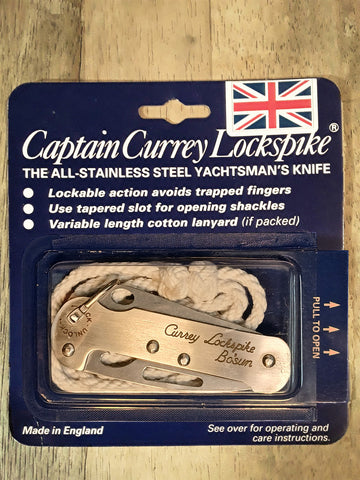
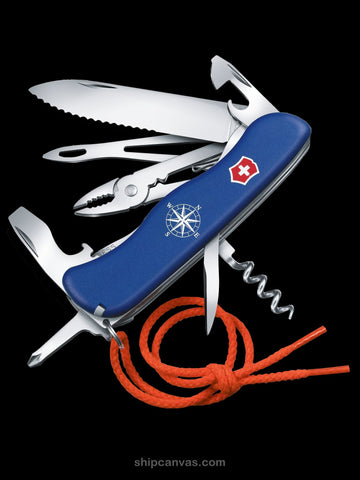
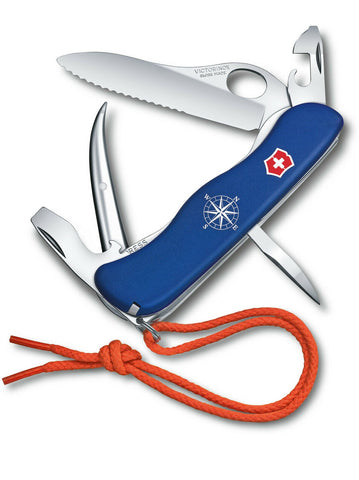
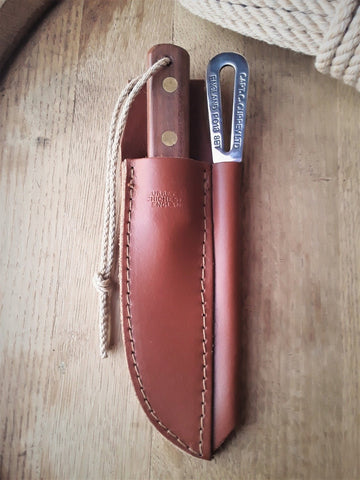
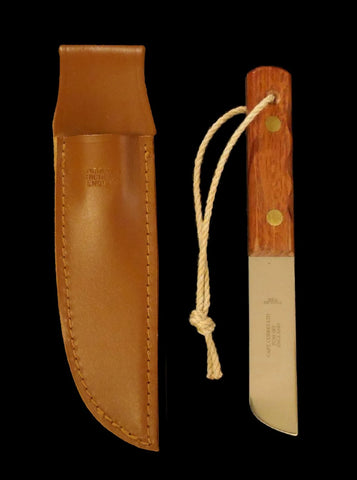
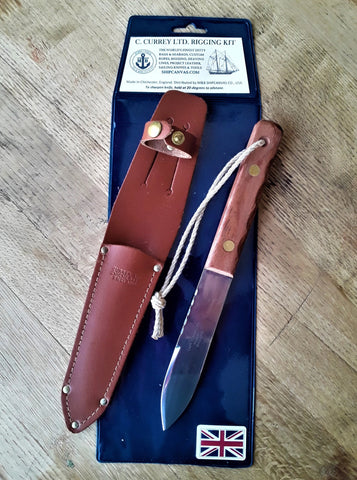
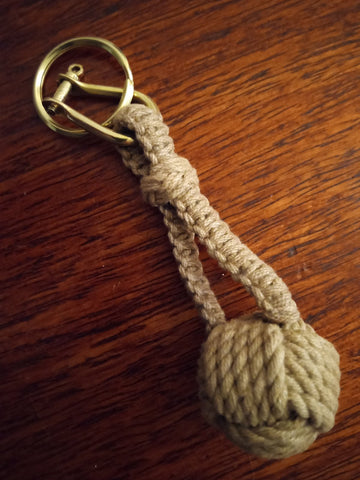
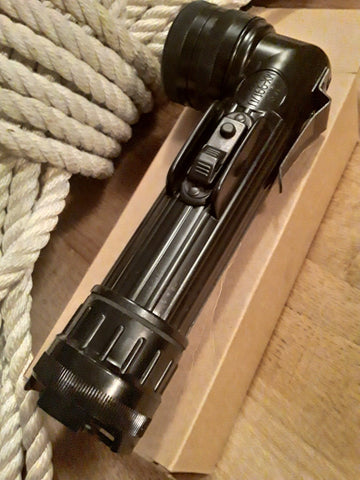
![Captain's Rigging Knife Set by Morris & Barth [SHIPCANVAS.COM]](http://shipcanvas.com/cdn/shop/products/Best_Rigging_Knife_MORRIS_BARTH_large.jpg?v=1505064019)
